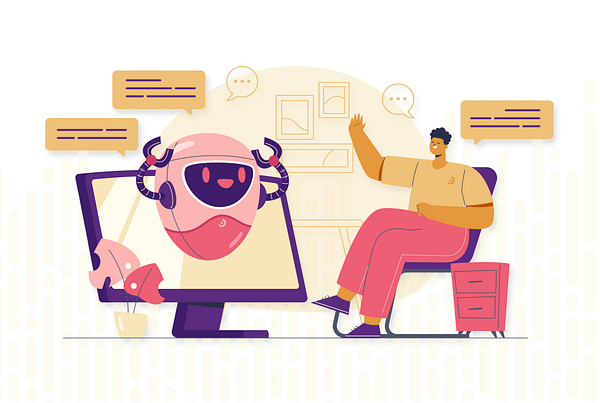As seen on www.physicaltherapist.com
At Prompt, we are a team with ZERO clinical experience. And we know, that sounds crazy! However, we believe that it has been our greatest strength. It has enabled us to tackle problems with a unique approach and is the reason we have built a product that is so drastically different, yet, at the same time, so improved, simple, and intuitive. Understanding the workflow of our target audience was an absolute necessity. This meant teaming up with physical therapists, billers, front-desk administrators, office managers, and of course the owners.
We believe that the statement “Built by therapists for therapists,” is fundamentally flawed because it fails to consider the other key individuals within a clinic. In order to truly increase efficiencies, the software must be built to improve the workflows of every stakeholder at a clinic, not just the therapists. When Prompt was just an “idea on a napkin,” we noticed that was certainly not the case.
Our founders are great at getting hurt, leading to lengthy stays in physical therapy. Through building bonds with their therapists, it became clear that there were massive inefficiencies in their workflow with plenty of room for improvement. This led to the first phase of Prompt’s development in March of 2017: Product Discovery.
Discovery
Before writing a line of code, we wanted to verify that there actually was a problem with the way centers run and the way current EMR and billing software operate. After almost a year of Discovery, we started to feel like we had a grasp of the problems at hand. The research we performed included in-person observation of clinic employees operating on their existing software, in-depth interviews, analysis of edge cases, and understanding the journey of one of our customer’s patients from the time they first contact a center to the time their case is closed. We then spent another few months performing follow-up research, competitive analysis, more follow-up research, and finally began mapping out our solution – we knew there was a real opportunity.
Key Problem Areas
It was not too challenging to identify the key problem areas. Asking questions like, “What is your least favorite part of your job?” made the problems pretty clear. We learned that:
- PT Burnout is a very real thing. Most therapists take their documentation home with them.
- Supporting / admin staff have to transcribe data across multiple platforms leading to data loss and other errors.
- Existing systems were antiquated and failed to automate manual processes that in the current time could be solved through technology.
It became obvious that the two most important areas for improvement were in documentation and billing. Most EMR’s claim to be “fully” integrated, but it is important to consider the nuances in such a claim. While many systems can transfer over CPT and ICD-10 codes from the EMR into the billing software, that is only a one-way communication and requires the user to sign into the billing software to submit claims. In addition, the one-way communication causes issues if the biller notices an issue and needs to get additional information out of the EMR. This one-way communication causes increased data entry and loss, frustration, and ultimately, errors. In order to solve that problem, billing had to be built into the same exact platform as the clinics EMR, not part of a one-way integration.
The Solution – A User Experience Focused Platform
Continuously throwing features at a product is an easy way to keep selling and edging out your competitors. The problem is that creating a feature-focused sales pipeline creates a product that grows into something that nobody wants to use. Yes, it is capable of doing a lot of things, however, it does none of them well and the integrations only compound the issue of clinics having to pay for 2-5 pieces of software to run their practice. We knew from the beginning that we wanted to avoid prioritizing things that could lead to bloat but rather find the most important pieces of functionality and build as much efficiency and ease-of-use into those as possible.
We started off by asking questions about everyone’s problems and then started asking questions that encouraged people to think outside of the box. Questions like, “If you could click a button and automatically have your dream EMR software, what would documentation look like?” No idea was too extraordinary – the crazier the better.
Some of the ideas ranged from “I don’t want to have to type anymore” all the way up to “I want to use Elon Musk’s Neuralink to just think and then have my thoughts convert to documentation.” We wanted these kinds of responses so that we could come as close as possible to their desires, using the technology and resources we have available to us today.
OBVIOUSLY, we weren’t going to be able to translate someone’s thoughts into defensible documentation. But what about their simple clicks or taps on a tablet? The overarching theme is that slow documentation had to be solved. This led to our creation of click-based-documentation that can be done from any device. In the process, we had to totally rethink the way the documentation process works.
For example, SOAP is an inefficient way to document. SOAP was designed as a reporting tool for insurance purposes, not therapist workflow. Going back and forth from Subjective or Objective to Assessment and Plan created a horrible user-experience. We made it possible to generate goals and assessments for a measure all in one screen. Although therapists do not have to document in SOAP, they still have to report to SOAP in order to be paid. Prompt handles that by converting documentation to SOAP to keep documentation bulletproof.
As a result, therapists using Prompt can complete initial evaluations in under 8 minutes, and daily notes in just 1 minute. Their clicks or touches seamlessly convert into defensible documentation which can be signed and sent over to billing in just three clicks. Not to worry, the flowsheet automatically attaches to the note to further streamline billing.
8-Minute Evals || 1-Minute Daily Notes
BILLING: Having the fastest documentation is great, but that doesn’t do a clinic a whole lot of good without powerful billing functionality. Therefore, billing is at the core of Prompt’s DNA. Our user-friendly billing makes it easier than ever to submit claims either individually or in bulk with a few taps or clicks depending on your device. We accomplished this by incorporating 3 fundamental principles:
It’s 2019, physical therapists shouldn’t have to stuff envelopes or send out faxes. We made it possible to mail invoices electronically, e-fax claims to carriers, and automatically track authorizations. With Prompt, you will never stuff an envelope, fax a HCFA, or log into an outdated clearinghouse software again.
Prompt’s built-in claim validation system helps you submit claims accurately on the first try, driving down accounts receivable and increasing the speed at which you get paid!
In order to decrease accounts receivable, we had to improve the collections process. Prompt makes it easier than ever to collect payments in center through our Stripe integration, ability to invoice patients electronically with payable links, and track patient balances.
Wrap Up
Prompt’s user-experience team is at the core of our platform. Our early users see what the expected version of the finished product is before a single line of code is written for any given feature. That has helped to ensure that our product has been built from the ground up with each and every user’s needs in mind. As we have grown and built out the product, our users have remained an integral part in the future of the platform. A relentless focus on user-experience is what got us to the point we are at today and will remain at the center of Prompt going forward.




